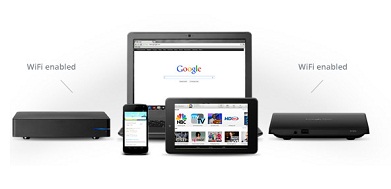What Good Is 1 Gig at Home, Really?
If you’re running, say, 300 Netflix accounts all streaming video simultaneously to your house, you’re definitely in the market for a 1 Gigabit per second connection.
For normal people, on the other hand, it’s overkill and will be for at least the next few years.
FCC chairman Julius Genachowski loves the idea of Gigabit-per-second Internet connections, and wants to see 1 Gig services in at least one community in all 50 states within two years.
Look, I get it. We’re Americans. We want to be the best at everything in the world.
To some, it’s embarrassing for the country that invented the Internet to be chronically stuck behind other European and Asian nations on connection speeds, although we’ve climbed up to 9th place worldwide, according to Akamai’s Q3 2012 State of the Internet Report.
But shouldn’t the focus be on connecting people who don’t have broadband at all -- 34% of American adults did not as of April 2012, according to the Pew Internet & American Life Project -- rather than promoting investments in hitting a magical speed that, at least in the near term, serves no useful purpose?
Check this out: Google Fiber -- the Internet giant’s “not-a-hobby” 1-Gbps fiber-to-the-home project in Kansas City -- delivered an average downstream speed of 257.91 Mbps for the period between Feb. 4 and March 5, 2013, according to Ookla’s NetIndex, based on data compiled from Speedtest.net.

How to explain that? Is Google delivering just 25% of the speed it promised with the “Think Big With a Gig” experiment?
No, but the reasons for the comparatively low figure are enlightening.
The biggest problem in end-to-end testing of a 1 Gbps connection is that 100 Mbps home networking gear and Wi-Fi connectivity become the bottleneck, Ookla co-founder Doug Suttles told me. As such, “there are many test results for Google Fiber that are less than 100 Mbps, and there are many that are over 500 Mbps. What shows on NetIndex currently is the automated blend of the two,” he said.
In other words, current-generation home networking equipment can’t even take advantage of the 1-Gig pipe, much less individual applications. (Google Fiber's router provides four Gigabit Ethernet ports but the 802.11n Wi-Fi radios in the box support a theoretical max of 300 Mbps.)
By the way, it’s worth noting that Ookla’s Speedtest is indeed capable of measuring 1 Gbps speeds. Comcast, in fact, used the Ookla tool in its 2011 demo of a 1-Gig cable modem running in its Chicago system, showing a peak downstream rate of 1.084 Gbps.
Meanwhile, there’s another factor contributing to the less-than-a-gig average: A Google spokeswoman noted that the Internet company offers both symmetrical 1-Gbps service as well as a free 5 Megabit per second in the handful of Kansas City neighborhoods where it has started activating customers.
So, given the option of paying $70 per month for the fastest Internet in the country! or getting 5 Mbps for free, some of those initially hooked up to Google Fiber in KC would rather get something for nothing.
And why not take the 5 Meg for free? That’s fast enough to accommodate the highest-quality HD video Netflix currently offers; note that Google Fiber delivered an average of 3.02 Mbps to Netflix subs in January, according to Netflix’s ISP rankings.
Sure, 1 Gbps could someday become the norm for home users. And cable operators are already planning for that day and beyond with the development of DOCSIS 3.1, designed to hit upwards of 10 Gbps. But even if you accept that Internet connection speeds will continue to grow at 50% annually, you won’t be getting into the 1 Gbps range until around 2020, according to a projection by Arris.
Today, Gigabit Internet speeds are all about bragging rights. Even at 257.91 Mbps, Google Fiber is the fastest ISP in the nation as measured by Ookla. And as I’ve noted before, Google’s interest in the FTTH project appears to be (a) generally encouraging a faster Internet so it can make more search and video ad revenue and (b) understanding the economics of building and operating last-mile broadband services, so it has data to challenge ISPs about the cost of delivering bits to the home.
ISPs that serve a large and diverse customer base -- over large service areas -- must weigh the network investment required to deliver 1 Gig with the return they’re going to get. Getting to market too soon is a poor use of capital: Chest-thumping, high-fives and happy headlines don’t pay the bills.
Follow me on Twitter: xpangler
Multichannel Newsletter
The smarter way to stay on top of the multichannel video marketplace. Sign up below.
